With the wind industry taking a belting around the planet – its spruikers are left clinging to any vestige of hope, with the anxious zeal of shipwreck survivors happening upon that last piece of flotsam.
One such “hope”, is their belief that China provides the perfect example of what wind power outfits can do when immune from the pesky little obstacles like free power markets and democratic rights.
The line they spin is that China is leading the world in the roll-out of these things; and is well on the way to a 100% wind powered future. But, as with almost everything that the wind industry tosses up as self-justification, the facts tell a somewhat different story – in China:
20% or more of China’s wind power capacity isn’t even connected to the grid (talk about idle gestures);
grid operators aren’t about to change that equation, simply because they’ll lose money on the “deal”;
the vast bulk of China’s power generation comes from reliable coal fired plant (as you’d expect in a country that’s serious about economic growth, industry and employment);
wind power investors are taking a flogging and are being told to pray to the Wind Gods in the “hope” of better returns next year; and
the whole scam depends (apart from suitably benevolent breezes) on the continued willingness of governments to force (through mandated subsidies and/or fines) grid operators or retailers to take power at exorbitant cost, from an entirely weather dependent generation source, that has no commercial value – apart from pocketing subsidies or avoiding fines.
For more detail of the above, see this post:
China’s Wind Power Ponzi Scheme Collapsing: Grid Operators Refusing to Connect Wind Farms
As everywhere else on Earth, the ‘economics’ of wind power in China are pure nonsense. Massive and endless subsidies are all:
The Wind Industry: Always and Everywhere the Result of Massive & Endless Subsidies (Part 1)
The Wind Industry: Always and Everywhere the Result of Massive & Endless Subsidies (Part 2)
And, just like everywhere else, there’s a natural limit to what those bound to pick up the phenomenal costs of endless, corporate welfare on steroids will tolerate – the Chinese, no exception.
Instead of following disasters like Germany, China is building the capacity for its surging power needs around meaningful power sources: its Three Gorges Dam has added a massive 22,500MW to its hydro capacity; and it has dozens of new nuclear plants and hundreds of coal and gas-fired plants under construction. China’s economic growth has been driven by having secure, reliable and affordable power: all of the essential electricity elements that are absent with wind power. And it isn’t about to take the foot off the pedal just to satisfy the Western World’s wind-cult.
Here’s the kind of story you won’t see among what passes for popular media in the West: a piece filled with facts and data, rather than starry-eyed fantasy.
China Won’t Waste Its Time on Wind Power
Institute for Energy Research
5 April 2016
China is building coal-fired plants (about one every 2 days)[i] and nuclear plants to supply its energy needs, but has decided not to waste its time on wind power, according to China’s National Energy Administration (NEA).
The local authorities in Inner Mongolia, Jilin, Heilongjiang, Gansu, Ningxia and Xinjiang—the windiest areas in China—were told to no longer approve conventional wind power projects until there is better infrastructure to transmit and use the power.
These regions have more wind turbines than the rest of China combined–about 71 gigawatts.[ii] According to the NEA, 33.9 billion kilowatt-hours of wind power (15 percent of China’s total wind power) was wasted in 2015 because of low utilization efficiency.[iii] This is not a new issue.
China ordered its wind operators to stop increasing its wind power four times in the last five years because wind’s unreliability was damaging the country’s power grid and costing the government enormous amounts of money. China is learning from its experience with wind power.
Instead of the United States learning from China’s actions, President Obama’s Environmental Protection Agency (EPA) is promulgating onerous regulations that will push the United States into even more intermittent renewable power (wind and solar), making Americans pay higher costs for its energy. After all, he announced that “under my plan, electricity prices will necessarily skyrocket.” Since President Obama took office, residential electricity prices have increased 13 percent, and higher prices will come as EPA’s regulations are implemented.
China’s Electric Capacity and Generation
China’s electric generating base is mostly coal-fired, with 820 gigawatts of coal capacity—almost 3 times the coal-fired capacity of the United States. In the first nine months of 2015, China issued environmental approvals to build 155 coal-fired power plants (123 gigawatts).[iv] China’s second largest generating technology is hydropower, representing almost 23 percent of its capacity in 2014. Wind power had a 6.8 percent share and solar power a 2.3 percent share. (See chart below.)
Source: China Daily, http://www.chinadaily.com.cn/business/chinadata/2015-02/13/content_19582590.htm
Despite wind representing 6.8 percent of China’s generating capacity in 2014, it only represented 2.8 percent of its generation. The problem is that the windiest sites are far from population centers, and costly transmission lines are needed to bring the power to where it is needed.
Similarly, while solar represented 2.3 percent of China’s generating capacity in 2014, it represented only 0.4 percent of its generation. That’s because solar, like wind, is an intermittent technology, meaning it can only generate power when the sun shines.
Most of China’s generation (75.2 percent) came from thermal power (coal and natural gas).[v] (See chart below.)
Source: http://www.statista.com/statistics/302233/china-power-generation-by-source/
China’s total generating capacity is estimated to have increased 10.4 percent in 2015, despite just a 0.5 percent increase in generation. Nuclear capacity increased 29.9 percent in 2015.[vi] China currently has 32 nuclear reactors operating, 22 under construction, and more about to start construction. It is building some of the world’s most advanced nuclear reactors and expects to have 150 gigawatts of nuclear power by 2030—over 7 times more than it has today.[vii]
The U.S. Generating Sector
In contrast, the United States is retiring coal-fired capacity and only has a few nuclear power reactors under construction, with no plans to extend the nuclear fleet further. Instead, the United States is building natural gas, wind, and solar plants.
The United States retired almost 18 gigawatts of electric generating capacity in 2015, of which over 80 percent was coal-fired. About 30 percent of the coal capacity that retired in 2015 occurred in April when the EPA’s Mercury and Air Toxics Standards (MATS) rule went into effect. More coal-fired retirements are expected due to MATS, as some coal plants applied for and received one-year extensions, extending their lives until April 2016. Several other coal-fired plants have received additional one-year extensions beyond April 2016, because they are needed to ensure electric grid reliability.[viii]
The amount of coal capacity retired in 2015 was almost 5 percent of the nation’s total coal capacity. About half of the retired coal capacity was located in three states—Ohio, Georgia, and Kentucky—with those states retiring at least 10 percent of their coal capacity in 2015. Other states with coal-fired capacity, such as Indiana, West Virginia, and Virginia, each retired at least one GW of coal capacity in 2015.
Source: Energy Information Administration, http://www.eia.gov/todayinenergy/detail.cfm?id=25272
Wind, natural gas, and solar power made up almost all new electric generating capacity in 2015, accounting for 41 percent, 30 percent, and 26 percent of total generating additions, respectively. That trend is likely to continue into 2016 and beyond as Congress allowed subsidies for wind and solar power to continue for another 5 year. EPA’s so-called Clean Power Plan also favors wind and solar power construction, which will result in the retirement of additional coal-fired power plants beyond those retired due to MATS.[ix]
Source: EIA, http://www.eia.gov/todayinenergy/detail.cfm?id=25492
There are 4 nuclear reactors under construction in the United States, which are expected to come on line in 2019 and 2020.[x] In February 2012, the Nuclear Regulatory Commission (NRC) approved a license allowing for the construction and conditional operation of two new nuclear reactors at the Vogtle nuclear power plant in Georgia, marking the first time the commission green-lighted construction for a new reactor since 1978. And in March 2012, the NRC approved a second license allowing construction and conditional operation of two new reactors at the Virgil C. Summer nuclear power plant in South Carolina.[xi] However, onerous regulations in the United States plague the construction of these units, dramatically increasing their cost, in contrast to their construction in China.
Conclusion
China is building electric generating plants for its future with heavy permitting and the construction of coal-fired and nuclear power plants. By contrast, the United States has onerous regulations that are forcing the retirement of coal-fired capacity, as well as the construction of wind, natural gas, and solar plants to take their place. The premature retirement of coal-fired power plants will leave Americans paying much more for their power, as it is more costly to build new capacity than to keep existing capacity operational when reasonable environment regulations are in place.
Obama’s EPA chief admitted that its regulations were meant to show “leadership” rather than actually curb projected warming when confronted in Congress by the fact that the Administration’s plans would have little to no impact on climate change.[xii] In other words, the Administrator of the EPA knows the costs are high and the climate change benefits of the president’s regulations are almost non-existent, but views them as useful for her agency’s public relations campaign. It is unfortunate that the American public will end up paying for these regulations and subsidies in both their taxes and much higher utility bills.
[i] Daily Caller, China Permits 155 New Coal Plants to Be Built, November 11, 2015, http://dailycaller.com/2015/11/11/china-permits-155-new-coal-plants-to-be-built-thats-one-every-two-days/
[ii] China, Lots of wind power wasted, March 17, 2016, http://www.china.org.cn/business/2016-03/17/content_38056947.htm
[iii] Daily Caller, China Stops Building Wind Turbines Because Most of the Energy is Wasted, March 28. 2016,http://dailycaller.com/2016/03/29/china-stops-building-wind-turbines-because-most-of-the-energy-is-wasted/#ixzz44mZ88pBj
[iv] Greenpeace, China’s coal bubble, November 11, 2015, http://energydesk.greenpeace.org/2015/11/11/chinas-coal-bubble-155-new-overcapacity/
[v] Statista, Electric power generation in China in 2014, http://www.statista.com/statistics/302233/china-power-generation-by-source/
[vi] Reuters, China’s 2015 power consumption up 0.5 pct. Year-on-year, January 17, 2016, http://www.reuters.com/article/china-power-consumption-idUSL3N15104C
[vii] Nuclear Power in China, April 2016, http://www.world-nuclear.org/information-library/country-profiles/countries-a-f/china-nuclear-power.aspx
[viii] Energy Information Administration, Coal made up more than 80% of retired electricity generating capacity in 2015, March 8, 2016, http://www.eia.gov/todayinenergy/detail.cfm?id=25272
[ix] Energy Information Administration, Wind adds the most electric generation capacity in 2015, followed by natural gas and solar, March 23, 2016, http://www.eia.gov/todayinenergy/detail.cfm?id=25492
[x] World Nuclear News, Start date for Vogtle units, January 30, 2015, http://www.world-nuclear-news.org/NN-Start-date-delay-for-Vogtle-units-3001158.html and Power Magazine, Costs and Deadlines Continue to Challenge V.C. Summer Nuclear Project, August 19, 2015, http://www.powermag.com/challenges-continue-for-summer-nuclear-plant-project/
[xi] Institute for Energy Research, http://instituteforenergyresearch.org/topics/encyclopedia/nuclear/
[xii] Daily Caller, EPA Chief: Climate Regs Meant to Show “Leadership,” Not Fight Global Warming, March 23, 2016,http://dailycaller.com/2016/03/23/epa-chief-climate-regs-meant-to-show-leadership-not-fight-global-warming
Institute for Energy Research


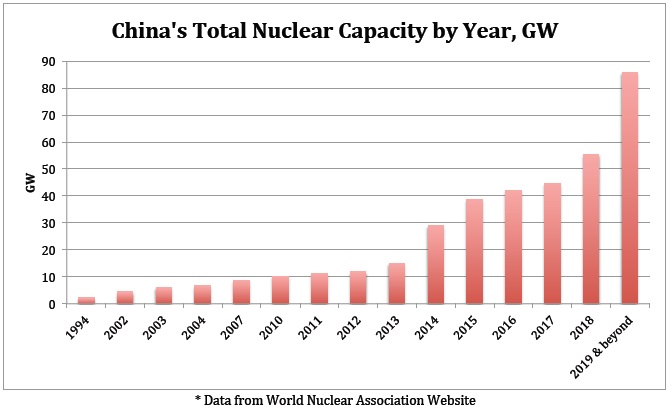
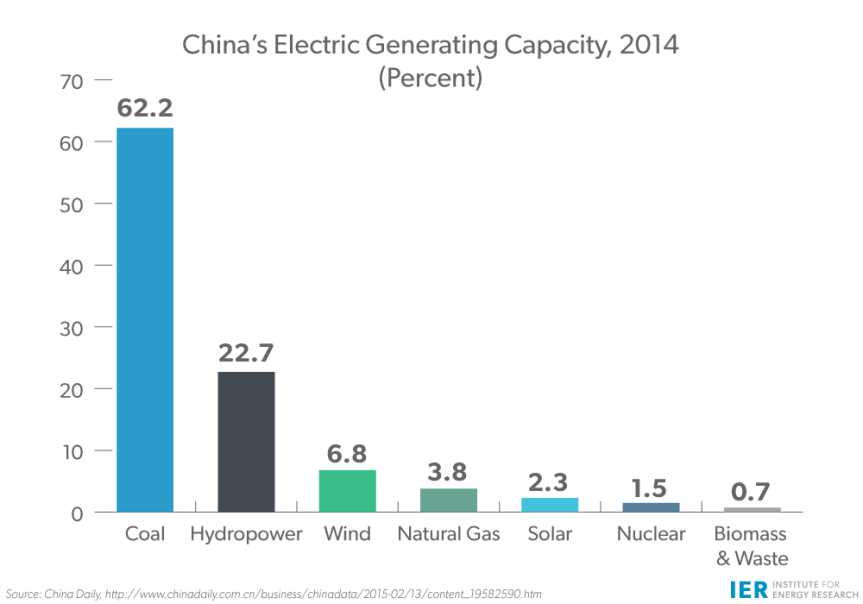
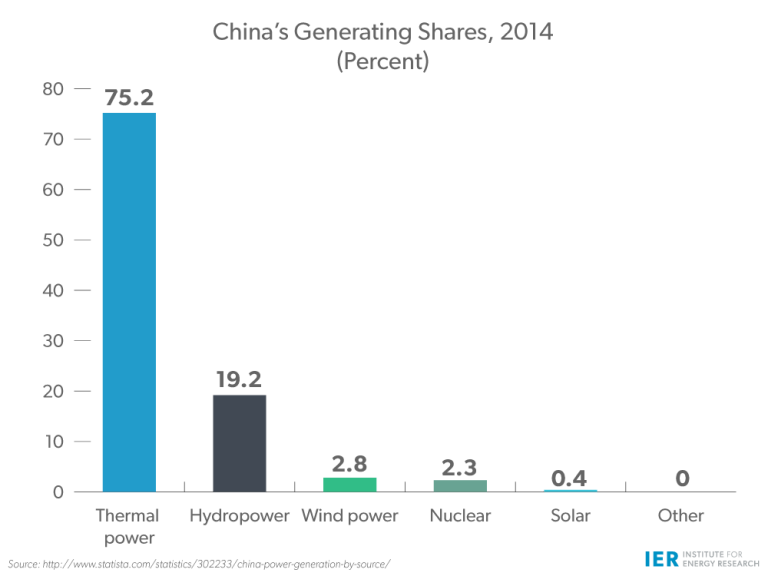
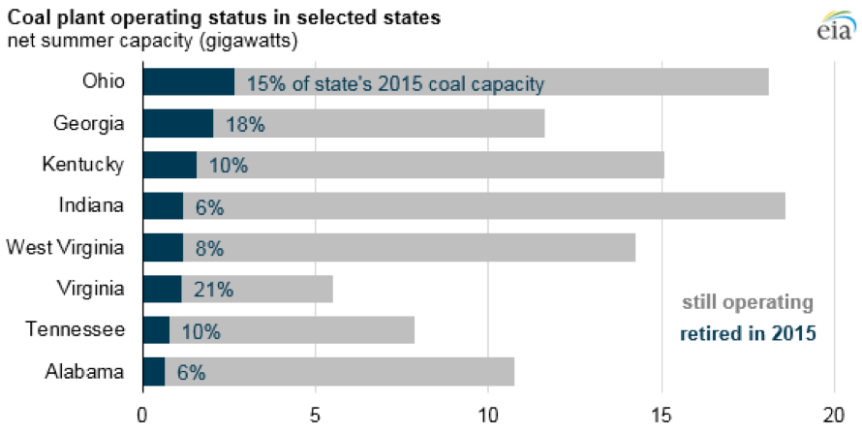
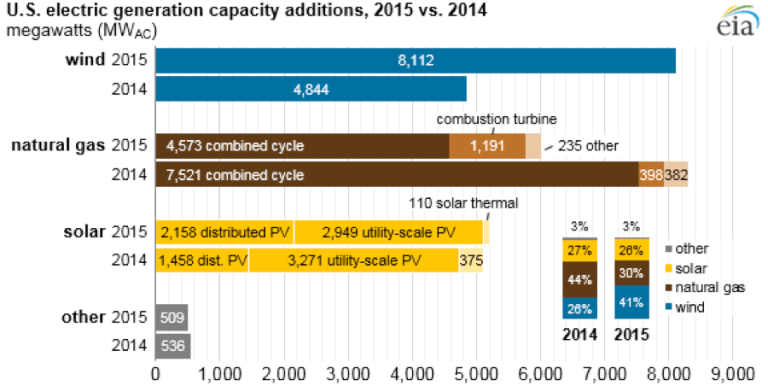
As someone who has spent a lot of time working in China, it became obvious that the Chinese will say one thing and then do the opposite to suit them, especially when it comes to making money. They believe that most foreigners are fools and are there to be ripped off.
This also applies to their use of renewable energy.
No Eco-loonies or unions are allowed to call the shots on the
energy mix policy in China.
It is patently absurd that this insanity is about the British oligarchy hanging on to its grubby inhumane casino economic system with the threat of murder and suicide as its plan of last resort.
Casino economy? Yes because there’s a ‘T’ in ETS.
The USA prattles on about ‘defending the freedom of the oceans’ as its pretext of invading China’s waters. Why would China restrict the sea trade routes it relies on for its international trade? The USA isn’t even a signatory to the open sea routes it is pretending to defend.
Britain is using the USA as its big bully pawn in its Empirical game of MADness – That’s right, they still call new ones Knights of the British Empire.
The New Silk Road and World Land-Bridge Report, already applauded by China, has recently been released in Arabic, in Egypt and now in of all places Yemen, where 1,000s are dying from the ISIS/al-Qaeda war invasion backed by Saudi Arabia, UK military involvement, and the USA. Even the mainstream media are culpable by hiding the truth. Anyone who doesn’t know what’s in the redacted 28 pages of the 9/11 report has been asleep.
We should be joining with the BRICS nations and building the infrastructure with them.
But what do we have? A governing system that says military places such as bombing and practice ranges should also protect the environment from destruction.
Does this mean that an Environment Effects Statement has to be undertaken before Oz engages in any military action? – Empty words from empty heads.
The first wind turbine in Oz was built near the regional sewer outlet for the Geelong (Victoria) district. It has rarely turned but Geelong is now an example of what the future with these things is.
Thank goodness for STT, every bit of sanity helps.
Reblogged this on Climatism and commented:
China kicking back, licking her lips and cashing in on the sanctimonious Wests decline thanks to its politically correct penchant to “save the planet” through draconian climate policy and feel-good, vote grabbing and thoroughly useless ‘green’ energy schemes and scams.
The red-green ideologues that rule Europe in politics and especially media are nothing but a bunch postmodernist, socialist, new age, anti-science ignorants. Europe is ruining itself on all levels and will soon be without wealth and importance in the new world that is emerging.
O/T.
Have you seen this. The real killer is P15, showing that adding more wind or solar *increases* CO2 emissions.
Click to access 2015_Presentation_Elec_Dilem.pdf
I’m not sure if the amazing people there at the Stop These Things bunker read the once bush bible or correctly titled ‘The Land’ newspaper but since their changes here a few months ago, I have noticed a swing further to the left. Not a big surprise being a Fairfax publication. But this weeks article,”banking on wind power” has bought about my unsubscription from what was once something I looked forward to every Thursday. ..
I am writing you from China where I just presented a paper showing the consequences of uncritical acceptance of renewable technologies. Are you interested for some data?
We would be delighted to reproduce your paper. Send us a link and we will do so.